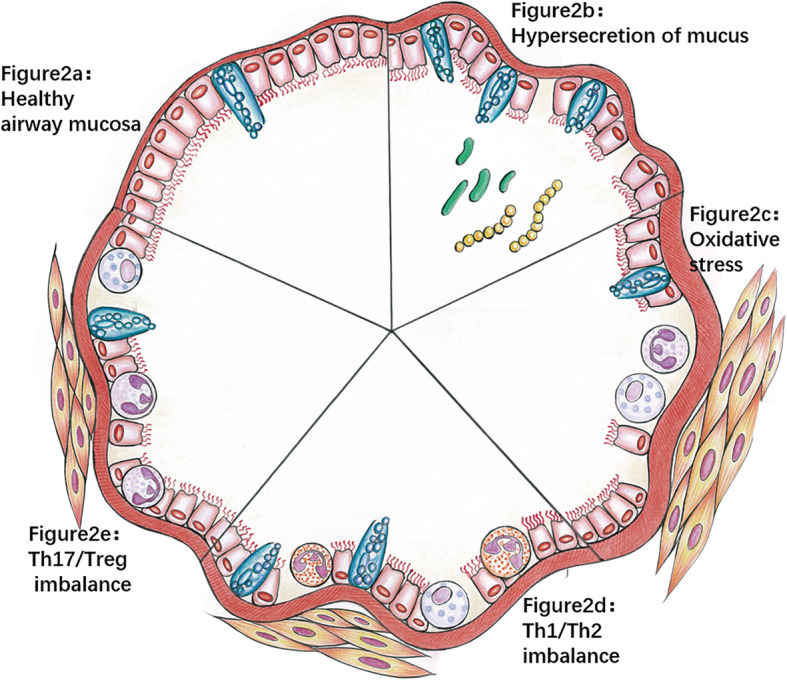Fig. 2.

Potential mechanisms by which NTHi leads to asthma. Healthy airways (a) have no inflammatory cell infiltration, and goblet cells secrete mucus to lubricate the airway. After NTHI infection: When large amounts of mucus are secreted (b), the airway is narrow and obstructed, and other bacteria may cause repeated infections, resulting in airway damage. When oxidative stress occurs, (c) neutrophils and mast cells accumulate in the airway, and mucus secretion increases, which is accompanied by airway remodeling and severe airway injury. When Th1/Th2 imbalance (d) occurs, the number of eosinophils and mast cells increases and mucus secretion increases, which is accompanied by airway remodeling and airway injury. When Th17/Treg imbalance occurs (e), a large number of neutrophils accumulate in the airway, and mucus secretion increases, which is accompanied by airway remodeling and airway injury
